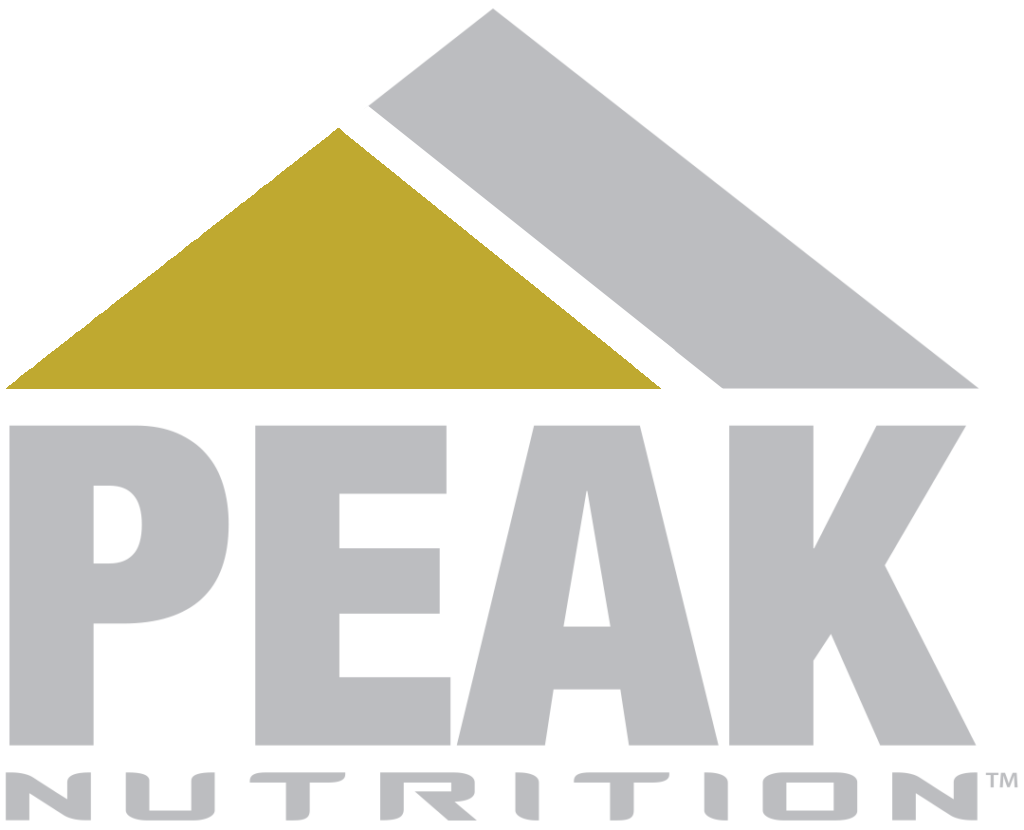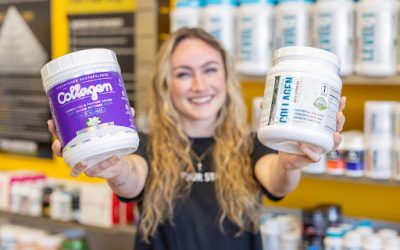Active recovery refers to low-intensity exercises that help muscles recover after intense physical activity. Unlike passive recovery, which involves complete rest, active recovery keeps the body moving, facilitating blood flow and helping to eliminate metabolic waste from muscles.
Taking time to recover is just as important as the workouts themselves. Proper workout recovery has many benefits, but it’s all part of the bigger picture of training smarter—not just harder—which includes knowing why rest days matter.
Importance in Fitness Routines
Incorporating active recovery into your fitness regimen is essential for several reasons:
- Prevents Injury: By promoting blood circulation and reducing muscle stiffness, active recovery helps prevent injuries.
- Improves Flexibility and Mobility: Regular active recovery practices enhance joint flexibility and muscle elasticity.
- Enhances Performance: Active recovery enables quicker recovery times, allowing you to maintain a high level of performance in subsequent workouts.
- Boosts Mental Health: Light physical activities can reduce stress and anxiety, contributing to better mental well-being.
The Science Behind Active Recovery
Physiological Benefits
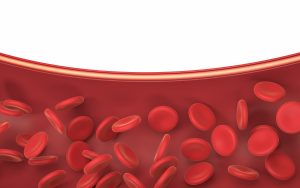
Active recovery aids in the repair and rebuilding of muscles. During intense exercise, muscles undergo microscopic damage. Active recovery helps in several ways:
- Increased Blood Flow: Low-intensity exercises promote blood circulation, delivering oxygen and nutrients to fatigued muscles.
- Lactic Acid Removal: Continuous movement assists in the removal of lactic acid, reducing muscle soreness.
- Muscle Temperature Maintenance: Keeping muscles warm through light activity prevents stiffness and maintains flexibility.
Psychological Benefits

Cropped image of woman with beautiful toothy smile
The mental health benefits of active recovery are just as significant:
- Reduced Stress: Gentle exercises like yoga and walking can reduce cortisol levels, the hormone associated with stress.
- Enhanced Mood: Physical activity stimulates the production of endorphins, improving mood and overall mental health.
- Improved Sleep: Regular active recovery can lead to better sleep patterns, essential for overall health and recovery.
Active Recovery vs. Passive Recovery
Key Differences
- Active Recovery: Involves light activities that keep the body moving. Examples include walking, stretching, and yoga.
- Passive Recovery: Involves complete rest, allowing the body to recover without physical activity. Examples include sleep and sitting.
When to Use Each Method
- Active Recovery: Best used on days following intense workouts to keep the body engaged and promote faster recovery.
- Passive Recovery: Ideal when dealing with injuries, extreme fatigue, or on designated rest days to allow for complete muscle repair.
Top 5 Active Recovery Techniques
1. Walking
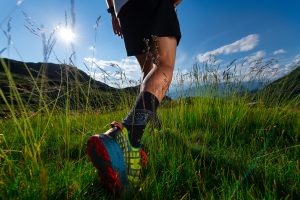
Walking is one of the simplest and most effective forms of active recovery. It’s accessible to almost everyone and requires no special equipment.
Benefits
- Enhances blood circulation
- Lowers stress levels
- Easy to incorporate into daily routines
How to Do It
- Aim for a brisk 20-30 minute walk.
- Keep a steady pace that elevates your heart rate slightly but allows you to maintain a conversation.
2. Yoga

Content kind pretty yoga teacher talking to young man and adjusting his pose while he stretching leg at yoga class
Yoga combines physical movement with mindfulness and deep breathing, making it a holistic active recovery practice.
Benefits
- Improves flexibility and balance
- Reduces muscle tension
- Enhances mental clarity and relaxation
How to Do It
- Follow a beginner’s yoga routine focusing on gentle stretches and relaxation poses.
- Incorporate poses like Child’s Pose, Downward Dog, and Pigeon Pose.
3. Foam Rolling
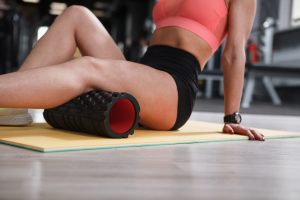
Foam rolling, or self-myofascial release, is a technique that helps release muscle tightness and improve blood flow.
Benefits
- Reduces muscle soreness
- Improves range of motion
- Increases blood circulation
How to Do It
- Use a foam roller to gently roll over tight muscles.
- Spend about 1-2 minutes on each muscle group, focusing on areas that feel tight or sore.
4. Swimming
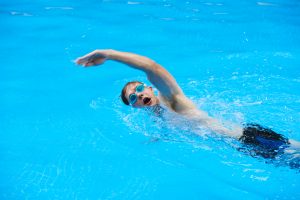
Swimming is a low-impact exercise that provides a full-body workout and promotes active recovery.
Benefits
- Low impact on joints
- Enhances cardiovascular health
- Promotes full-body relaxation and muscle engagement
How to Do It
- Swim at a comfortable pace for 20-30 minutes.
- Focus on smooth, controlled strokes and consistent breathing.
5. Stretching

Stretching is a fundamental active recovery technique that helps maintain muscle flexibility and joint health.
Benefits
- Reduces muscle stiffness
- Enhances flexibility and range of motion
- Promotes relaxation and reduces stress
How to Do It
- Perform static stretches, holding each stretch for 15-30 seconds.
- Focus on major muscle groups like hamstrings, quadriceps, and shoulders.
How to Incorporate Active Recovery into Your Routine
Weekly Planning
Integrating active recovery into your weekly fitness plan is crucial for balanced recovery and performance. Here’s how you can plan it:
- Post-Workout: Dedicate 10-15 minutes at the end of each workout session for active recovery techniques such as stretching or foam rolling.
- Active Recovery Days: Schedule 1-2 active recovery days per week. On these days, engage in low-intensity activities like walking, yoga, or swimming.
Combining with Regular Workouts
To maximize the benefits of active recovery:
- Alternate Intensity: Follow intense workout days with lighter active recovery days.
- Listen to Your Body: Adjust the intensity and type of recovery activity based on how your body feels.
Listening to Your Body
Understanding your body’s signals is vital for effective active recovery:
- Monitor Fatigue: If you feel unusually tired, opt for more passive recovery techniques.
- Pain vs. Discomfort: Learn to distinguish between normal post-exercise discomfort and pain indicating potential injury. Use active recovery for the former and rest for the latter.
Common Mistakes and How to Avoid Them
Overdoing It
While staying active is important, overdoing active recovery can lead to further fatigue and hinder progress.
- Balance: Ensure a mix of active and passive recovery.
- Intensity: Keep recovery activities low-intensity to avoid additional strain on your body.
Ignoring Pain Signals
Ignoring pain can exacerbate injuries and delay recovery.
- Rest When Needed: If experiencing significant pain, prioritize rest and consult a healthcare professional if necessary.
- Modify Activities: Adapt recovery activities to avoid aggravating injuries.
Inconsistent Recovery Practices
Consistency is key to effective recovery.
- Routine: Establish a regular recovery routine and stick to it.
- Tracking: Keep a log of your recovery activities and note how your body responds.
Conclusion
Active recovery is a powerful tool in your fitness arsenal, promoting quicker recovery, preventing injuries, and enhancing overall performance. By incorporating techniques like walking, yoga, foam rolling, swimming, and stretching, you can create a balanced and effective recovery routine. Remember, the key to success is consistency, listening to your body, and making recovery an integral part of your fitness journey. Start implementing these techniques today and witness the positive impact on your fitness goals.
